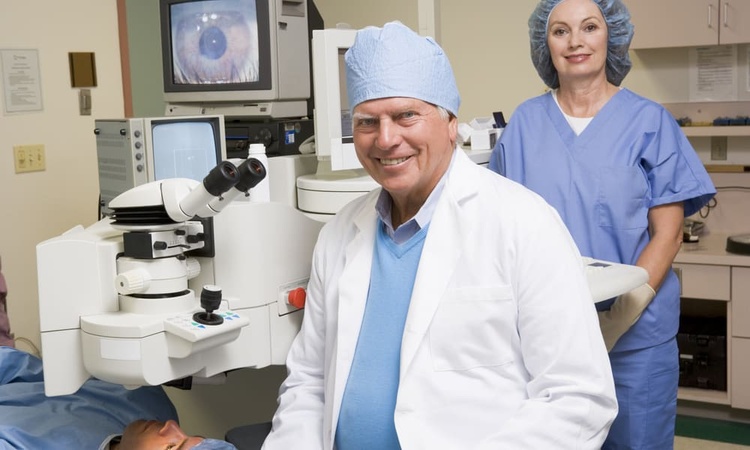Prostate Cancer Treatment Options: Modern Choices
Prostate cancer care has broadened, offering personalized strategies from active surveillance to cutting-edge therapies. This guide outlines surgical, radiation, hormonal, chemotherapy, immunotherapy and targeted options, plus cost considerations, side-effect management, and long-term monitoring to help patients and caregivers make informed decisions.

Prostate cancer treatment today spans a spectrum of approaches tailored to the tumor’s characteristics and the patient’s overall health, age, and preferences. Decisions hinge on disease stage, risk category, life expectancy and individual goals. Below is a clear overview of commonly recommended therapies, newer options, financial considerations, and what to expect during recovery and follow-up.
Surgical Options
Surgery is a mainstay for localized prostate cancer. Radical prostatectomy removes the prostate gland and some surrounding tissue and may include lymph node sampling. Surgical approaches range from traditional open procedures to minimally invasive techniques. Robotic-assisted prostatectomy has become common, providing enhanced precision, smaller incisions, and often a smoother recovery. Choosing surgery depends on tumor extent, urinary and sexual function considerations, and the patient’s tolerance for surgical risk.
Radiation Therapies
Radiation is an effective alternative or complement to surgery. External beam radiation therapy (EBRT) directs radiation from outside the body to the prostate, often delivered over multiple sessions. Brachytherapy places radioactive seeds directly into the prostate for localized, high-dose treatment. Advances in imaging and planning have improved accuracy, reducing exposure to nearby organs. Radiation may be chosen for localized cancers, used after surgery if risk is found, or given to relieve symptoms in advanced disease.
Systemic and Advanced Treatments
When cancer is more advanced or has spread, systemic therapies are typically used. Androgen deprivation therapy (ADT), commonly called hormone therapy, lowers testosterone levels or blocks its effects because prostate cancer cells often rely on androgens to grow. ADT can be temporary or long-term depending on disease stage.
Chemotherapy is generally reserved for metastatic or aggressive cancers that no longer respond to hormonal control. It can slow progression and help manage symptoms.
Newer modalities expand the toolkit: immunotherapy stimulates the body’s immune system to attack cancer cells and may be appropriate in select cases. Targeted therapies focus on specific molecular abnormalities within tumor cells. Precision medicine—using genetic and molecular testing—helps identify which patients might benefit from these tailored treatments.
Making the Treatment Choice
Selecting the right approach involves balancing effectiveness, side-effect profiles, life expectancy, and personal priorities. For some men with low-risk disease, active surveillance is an option: careful monitoring with PSA tests, exams and repeat biopsies to delay or avoid treatment unless the cancer shows signs of progression. Patients with higher-risk or symptomatic disease often need definitive therapies such as surgery, radiation, or a combination of treatments. Shared decision-making with a multidisciplinary team—urologists, radiation oncologists, medical oncologists and supportive care specialists—yields the best personalized plan.
| Treatment Type | Average Cost Range | Typical Insurance Coverage |
|---|---|---|
| Radical Prostatectomy | $35,000 - $90,000 | 60-80% covered |
| Radiation Therapy | $20,000 - $60,000 | 70-90% covered |
| Hormone Therapy | $10,000 - $30,000/year | 60-80% covered |
| Chemotherapy | $30,000 - $80,000 | 80-90% covered |
Prices, rates, or cost estimates mentioned in this article are based on the latest available information but may change over time. Independent research is advised before making financial decisions.
Managing Side Effects and Recovery
Side effects differ by treatment type. After prostatectomy, common issues include urinary incontinence and erectile dysfunction; pelvic floor rehabilitation and medications can improve outcomes. Radiation can cause urinary and bowel irritation, as well as sexual side effects; many effects are temporary, while some may persist. Hormone therapy often leads to fatigue, hot flashes, decreased libido, and metabolic changes; bone health monitoring and lifestyle interventions can help. Chemotherapy may cause hair loss, nausea, fatigue and increased infection risk.
Rehabilitation programs, pelvic floor physical therapy, sexual health counseling, nutritional support, and psychosocial services are integral to recovery. Early intervention for side effects tends to improve long-term quality of life, so communicating symptoms promptly with the care team is important.
Follow-up Care and Long-Term Monitoring
After initial treatment, regular monitoring is key to detect recurrence or manage late effects. Follow-up commonly includes periodic PSA testing, routine clinical exams, and imaging when indicated. The schedule varies by initial treatment and risk factors; higher-risk patients typically need more intensive surveillance. Long-term success also benefits from healthy behaviors—exercise, balanced nutrition, smoking cessation, and weight management—that support overall wellbeing and recovery.
Emerging Trends and Research
Ongoing research continues to refine when treatments are necessary and which combinations or sequences are most effective. Precision diagnostics, improved imaging, focal therapies that target tumor areas while sparing healthy tissue, and novel systemic agents are changing practice. Clinical trials remain a route for accessing promising therapies and contribute to improved standards of care.
This article is for informational purposes only and should not be considered medical advice. Please consult a qualified healthcare professional for personalized guidance and treatment.






